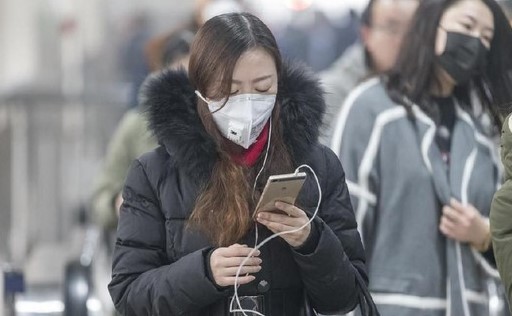In late December, an increase in cases of human metapneumovirus (HMPV) in China triggered widespread concerns, especially as social media videos of crowded hospitals fueled speculation about a potential global health crisis. The virus, primarily affecting children aged 14 and under, became the subject of alarming headlines, with fears of another global outbreak.
Rising Concerns Over Human Metapneumovirus (HMPV) Cases in China
This surge in cases, however, is being downplayed by public health experts who emphasize that the rise in HMPV cases is simply part of the usual cycle of respiratory viruses and is not cause for alarm.
The panic surrounding the HMPV surge in China illustrates how heightened awareness of infectious diseases in the post-COVID era has led to widespread fears, even over common and routine viruses. With the recent focus on viral outbreaks originating from China, the emergence of HMPV cases has added to the concerns, despite experts assuring that the situation is nothing out of the ordinary. Both Chinese health authorities and global health experts have emphasized that human metapneumovirus is not spreading at an unusually rapid pace or causing an extraordinary number of severe illnesses.
Understanding Human Metapneumovirus (HMPV)
HMPV, first identified in 2001, is not a new or particularly dangerous virus, despite recent attention due to the situation in China. It belongs to the same family as RSV and typically causes cold-like symptoms, such as cough, fever, and congestion. In rare cases, it can lead to more severe conditions like pneumonia, especially in the older citizens, young children, and those with weakened immune systems. However, most cases resolve on their own without medical intervention. HMPV is a seasonal virus and, although it can cause upticks in respiratory illnesses, it is not as alarming as viruses like COVID-19.
The recent surge in HMPV cases in China is partly due to the strict COVID-19 lockdown measures, which limited exposure to common viruses. As restrictions were lifted, people who hadn’t been exposed to respiratory viruses like HMPV became more susceptible to infections. This increase in cases, especially among young children, is typical after periods of limited exposure to pathogens and is not unusual. HMPV has been circulating for years but has only gained widespread attention due to improved disease surveillance and diagnostic testing.
The Spread of HMPV: What Experts Say
Despite the increase in HMPV cases, global health experts are not overly concerned. The U.S. Centers for Disease Control and Prevention (CDC) is monitoring the situation but does not view it as a novel or alarming threat. In the United States, HMPV accounts for less than 2% of respiratory virus cases, with influenza and COVID-19 being the primary causes of winter hospitalizations. Health experts emphasize that while HMPV is more common in young children and the older citizens, it can affect middle-aged adults, especially during seasonal peaks.
Improved testing and disease surveillance have made it easier to identify viruses like HMPV, leading to an increase in reported cases. However, experts caution that this rise does not indicate the virus is more dangerous than before. Instead, it reflects advancements in detection methods, making it easier to track and report respiratory viruses that might have gone unnoticed in previous years.
Symptoms and Prevention of HMPV
HMPV causes symptoms that are similar to those of a common cold or the flu, including cough, fever, nasal congestion, and fatigue. While most cases are mild and resolve without the need for medical treatment, the virus can be more severe for vulnerable populations, such as young children, the older citizens, and people with weakened immune systems.
There is no specific antiviral treatment for HMPV, and there is no vaccine available. Doctors recommend the same basic preventive measures that apply to other respiratory viruses:
To prevent the spread of HMPV and other viruses, practice regular handwashing with soap and water, especially after coughing or sneezing. Always cover your mouth and nose with a tissue or your elbow to contain droplets. Avoid contact with sick individuals, particularly during peak virus seasons, and wear masks in crowded places to reduce transmission. These simple steps can help limit the spread of respiratory illnesses.
While the fears surrounding the rise in HMPV cases in China are understandable, public health officials emphasize that it is no more dangerous than other respiratory viruses. It is just one of many viruses that circulate during the winter months and is unlikely to cause widespread harm to the general population. The situation in China, while concerning due to the media coverage, remains within the expected parameters for seasonal respiratory illnesses.




